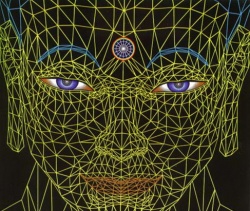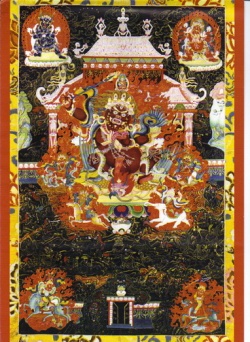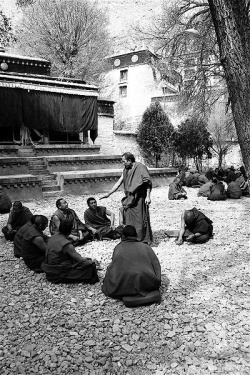Difference between revisions of "Chan and Live Zen"
(Created page with " <poem> (Key words: Chan, Zen, Dhyāna, Hinayana, Mahayana, Tantrayana, Samatha, Vippasana) Zen has become more popular since it spread to the...") |
|||
| (One intermediate revision by one other user not shown) | |||
| Line 1: | Line 1: | ||
| − | + | {{DisplayImages|1554|1069|3345}} | |
<poem> | <poem> | ||
| − | (Key words: [[Chan]], [[Zen]], [[Dhyāna]], [[Hinayana]], [[Mahayana]], [[Tantrayana]], [[Samatha]], Vippasana) | + | (Key words: [[Chan]], [[Zen]], [[Dhyāna]], [[Hinayana]], [[Mahayana]], [[Tantrayana]], [[Samatha]], Vippasana]]) |
[[Zen]] has become more popular since it spread to the {{Wiki|western}} [[world]] in the early twentieth century by [[Japanese Zen]] [[masters]]. By then, it had been nearly more than 800 years since several [[Chan]] schools was transmitted to [[Japan]] from [[China]]. To avoid misusing the [[name]] of [[Chan]] ([[Zen]]) or misunderstanding its meaning, we’d better know the following [[information]]… | [[Zen]] has become more popular since it spread to the {{Wiki|western}} [[world]] in the early twentieth century by [[Japanese Zen]] [[masters]]. By then, it had been nearly more than 800 years since several [[Chan]] schools was transmitted to [[Japan]] from [[China]]. To avoid misusing the [[name]] of [[Chan]] ([[Zen]]) or misunderstanding its meaning, we’d better know the following [[information]]… | ||
| Line 11: | Line 11: | ||
The content of [[Chan]] | The content of [[Chan]] | ||
| − | -In | + | -In general [[sense]], [[Chan]] is a general naming about [[Three Vehicles]] of [[Buddha’s teaching]]: the [[Hinayana]], [[Mahayana]] and [[Tantrayana]]. All these three kinds of [[Buddha’s teaching]] used to be transmitted and practiced in [[China]]. The [[Hinayana Buddhism]] faded since {{Wiki|Tang Dynasty}} (618 - 907), and [[Mahayana Buddhism]] became popular, then. At the same [[time]] the [[Tantrayana]] [[Buddhism]] was also transmitted to [[China]], but it existed in short term, but it was transmitted to [[Japan]] in {{Wiki|Tang Dynasty}}, and [[exists]] until now. |
-In narrow [[sense]], [[Chan]] is a [[name]] of one of the schools of [[Mahayana Buddhism]] in [[China]]. | -In narrow [[sense]], [[Chan]] is a [[name]] of one of the schools of [[Mahayana Buddhism]] in [[China]]. | ||
| Line 19: | Line 19: | ||
The core of [[Chan]] | The core of [[Chan]] | ||
| − | -The [[Chan]] as the | + | -The [[Chan]] as the general [[name]] of [[Buddha’s teaching]] includes two main parts: "[[Wisdom]] of [[Emptiness]]" and "[[Compassion]] of surviving all [[beings]] from [[samsara]]" (Buddicita). The [[wisdom]] of [[Emptiness]] is the must to free from [[Samsara]]. It is based on the [[Four Dharma Seals]]: [[Impermanence]], the [[essence]] of [[suffering]], no [[inherent]] {{Wiki|independent}} [[self]], and [[Nirvana]], which can be the standard to [[recognize]] the [[Buddha’s teaching]]. In other words, it is the way to distinguish [[Chan]] from other [[meditations]]. And Buddicita is the must for becoming [[Buddha]]! |
-There are two fundamental ways of practice for all [[Buddhism]] schools: [[Samatha]] and Vippasana. [[Samatha]] is to cultivate {{Wiki|stable}} [[mind]]. Vippasana is to cultivate [[wisdom]]. They should depend on each other. For different vehicles of [[Buddhism]], they have common parts and also specific parts for practicing [[Samatha]] and Vippasana. But there’s no {{Wiki|contradiction}} among them. | -There are two fundamental ways of practice for all [[Buddhism]] schools: [[Samatha]] and Vippasana. [[Samatha]] is to cultivate {{Wiki|stable}} [[mind]]. Vippasana is to cultivate [[wisdom]]. They should depend on each other. For different vehicles of [[Buddhism]], they have common parts and also specific parts for practicing [[Samatha]] and Vippasana. But there’s no {{Wiki|contradiction}} among them. | ||
Latest revision as of 16:37, 20 March 2014
(Key words: Chan, Zen, Dhyāna, Hinayana, Mahayana, Tantrayana, Samatha, Vippasana]])
Zen has become more popular since it spread to the western world in the early twentieth century by Japanese Zen masters. By then, it had been nearly more than 800 years since several Chan schools was transmitted to Japan from China. To avoid misusing the name of Chan (Zen) or misunderstanding its meaning, we’d better know the following information…
The difference between Chan and Dhyāna
Dhyāna is a Sanskrit, which was translated into Chinese as Chan Na. It was the name of the psychological forms on the way to Samādhi (deeper meditation), through which to find the “original inherent self”. In Buddha’s teaching, Samādhi can be used but it is not the ultimate goal, because the Samādhi itself cannot cease the arising of suffering and afflictions. So masters chose only the part of pronunciation “Chan” as the name of all Buddha’s teaching, which is the way to guide beings to become Buddha.
The content of Chan
-In general sense, Chan is a general naming about Three Vehicles of Buddha’s teaching: the Hinayana, Mahayana and Tantrayana. All these three kinds of Buddha’s teaching used to be transmitted and practiced in China. The Hinayana Buddhism faded since Tang Dynasty (618 - 907), and Mahayana Buddhism became popular, then. At the same time the Tantrayana Buddhism was also transmitted to China, but it existed in short term, but it was transmitted to Japan in Tang Dynasty, and exists until now.
-In narrow sense, Chan is a name of one of the schools of Mahayana Buddhism in China.
-In wider sense, Chan means all the Buddhism grow up in China and spread from China to world, including Chinese Buddhism, Buddhism in Tibetan areas, Buddhism in Vietnam, Japan, Korea and western world.
The core of Chan
-The Chan as the general name of Buddha’s teaching includes two main parts: "Wisdom of Emptiness" and "Compassion of surviving all beings from samsara" (Buddicita). The wisdom of Emptiness is the must to free from Samsara. It is based on the Four Dharma Seals: Impermanence, the essence of suffering, no inherent independent self, and Nirvana, which can be the standard to recognize the Buddha’s teaching. In other words, it is the way to distinguish Chan from other meditations. And Buddicita is the must for becoming Buddha!
-There are two fundamental ways of practice for all Buddhism schools: Samatha and Vippasana. Samatha is to cultivate stable mind. Vippasana is to cultivate wisdom. They should depend on each other. For different vehicles of Buddhism, they have common parts and also specific parts for practicing Samatha and Vippasana. But there’s no contradiction among them.
About Chinese Chan School
Chan School is one of schools of Mahayana Buddhism in China, became flourished in Tang Dynasty. Its emergence as a distinct school of Buddhism was first documented in China in the 7th century AD. The teachings of Zen include various currents in Mahāyāna Buddhist thought. Even though it is called Chinese Chan, it was also handed down from Buddha's teaching. The feature of Chinese Chan is to guide mind directly to the truth through all kinds of ways, which are called Koan (Gong An in Chinese) - the "case study" between Zen master and disciples.
About Japanese Zen
Zen is the Japanese pronunciation of Chinese character – Chan, which represents a Buddhism school – Chan School. The Buddhism was transmitted to Japan originally in 6 century AD. The Zen (Chan school) was transmitted to Japan during 1192-1333 in Song Dynasty. There are two main lineages: LinJi Chan school and CaoDong Chan school.
Chan - bigger Zen
So we see, the Chan can not be simply equaled to Zen. Zen is part of Chan, but with cultural evolution of Zen in modern world, it is being used in broader area with broader meaning. So we may say: the Chan is bigger Zen. And Zen contains the same content of Wisdom of Emptiness and Buddicita. These are the reasons we still use “Zen” as part of the name of CCC meditation center.
Live Zen
Live Zen means the Buddha’s teaching can be found and practiced in every moment of our daily life. There’s no conflict between Hinayana, Mahayana and Tantrayana for Live Zen, but just different gates and levels to the same ultimate destination.
If we regard South-east Aisa Buddhism, Chinese Buddhism and Tibetan Buddhism as three Vehicles, in Live Zen, the Three Vehicles are driving together : )


